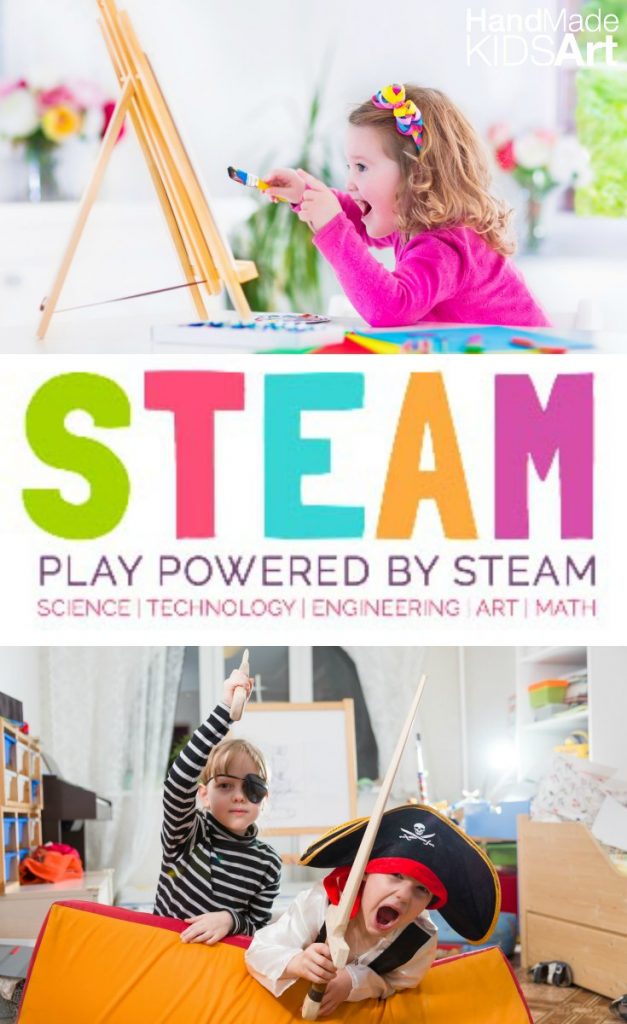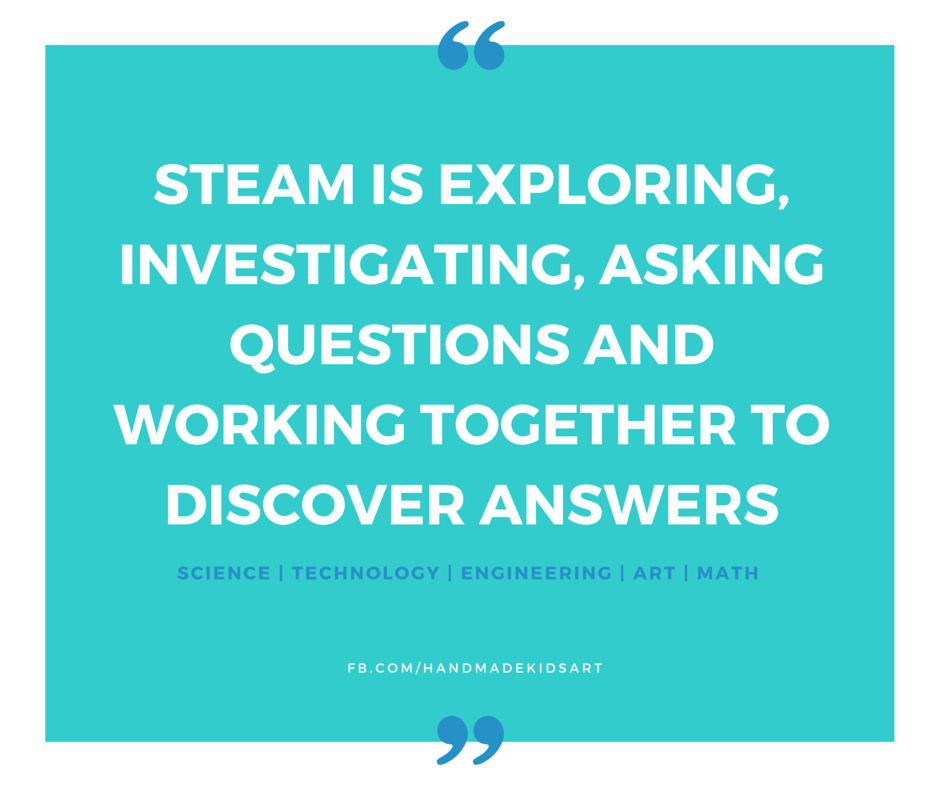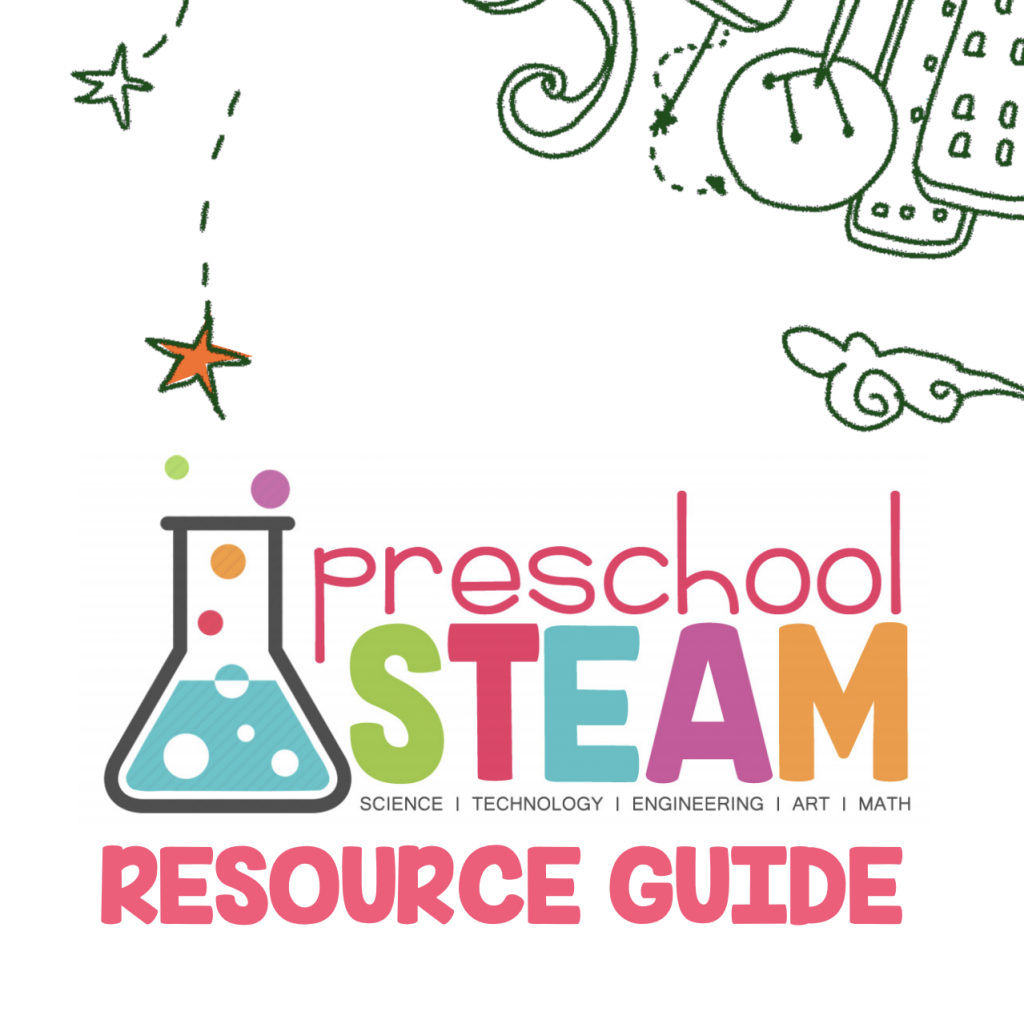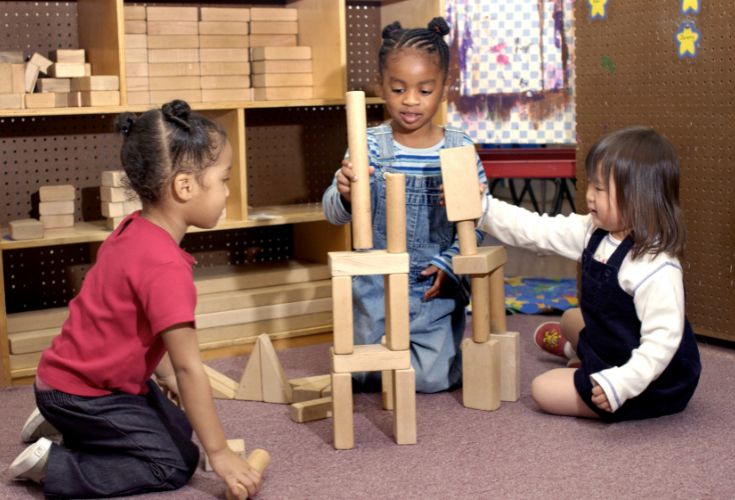Since writing the “STEM: Preschool Stem Enrichment” ebook, I get asked:

What does STEAM look like in a preschool setting?
In my experience, many Preschool teachers are already incorporating STEAM strategies in the classroom. Building center, cooking recipes, integrating art are all STEAM strategies.
Let’s take a closer look at STEAM strategies in the Preschool classroom.

- STEAM activities prompt investigation, discovery, and exploration.
- Teachers guide exploration with open-ended questions.
- Activities are integrated into STEAM disciplines
- Collaboration among children and adults.
- Understand and value every child’s Communication of ideas
Why is STEAM necessary in a preschool classroom?

STEAM experiences need to start in preschool because high-school may be too late.
And it’s not me that believes this…
“Education is under pressure to respond to a changing world,” education writer Jeevan Vasagar asserts in a Financial Times article. “As repetitive tasks are eroded by technology and outsourcing, the ability to solve novel problems has become increasingly vital.”
And the earlier students are exposed to the STEAM disciplines, the better. In a study by Microsoft, 4 in 5 STEM college students (78%) said they decided to study STEM in high school or earlier, and one in five (21%) decided in middle school or earlier. Yet, only 1 in 5 STEM college students feel that their K–12 education prepared them extremely well for their college courses in STEM.
STEAM explorations give children the skills needed for lifelong learning. Children learn how to observe, ask questions and investigate. Collaboration is encouraged among other children and adults. They deepen problem-solving solving skills that lead to innovative thinking.
Not only does a STEAM framework teach students how to think critically, problem solve and use creativity, it prepares students to work in fields that are poised for growth. A report from the U.S. Bureau of Labor Statistics projects growth in STEM and STEAM-related occupations of 8% between now and 2029, compared to 3.4% for non-STEM occupations.
To learn more, click here.
What can you do to get started with Preschool STEAM?
Set up a learning environment that cultivates exploration and inquiry.
Scaffold student learning by asking open-ended questions.
Model a STEAM rich vocabulary.
Offer experiences that give students opportunities to discover how things work.
Connect to your student’s interests.
Create an outdoor learning environment or integrate activities with nature.
Looking to get started with STEAM the Easy Way?

Sign up for our newsletter and get our quick start STEAM Resource guide.

Leave a Reply